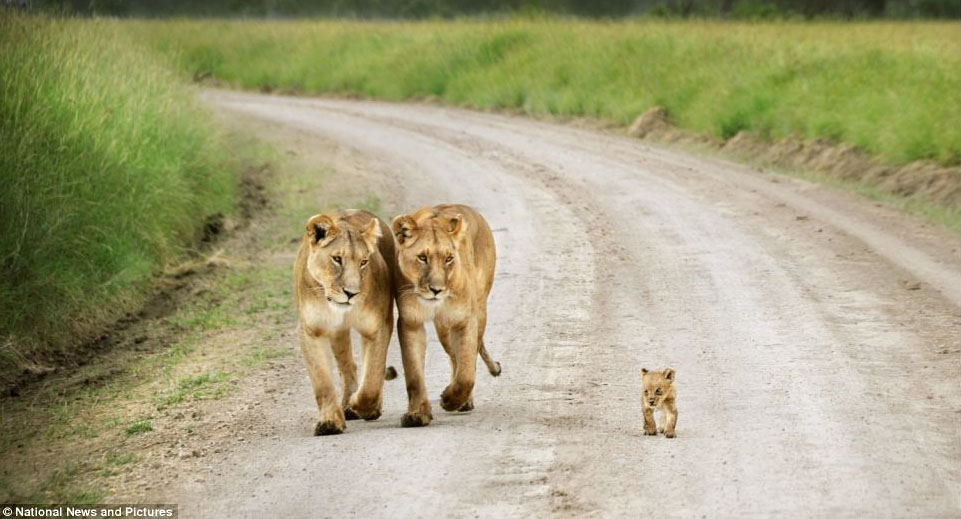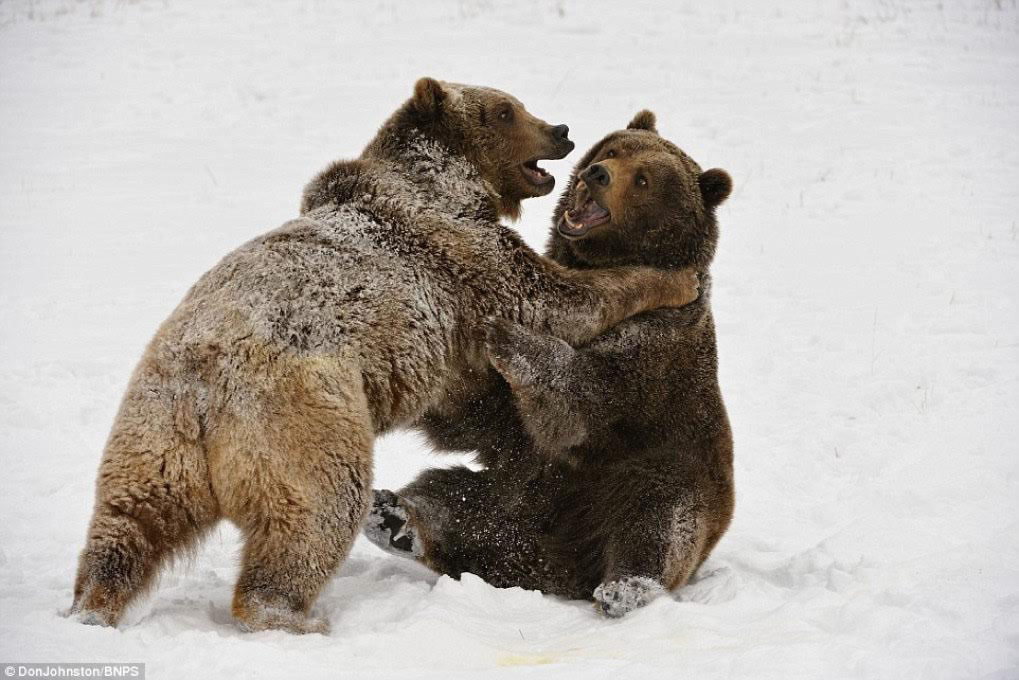Animal Play
Jocelyn Hansson
Biology 342 Fall 2015
Ontogeny
In general, play tends to occur early in an animal’s life. The frequency of animal play throughout lifespan tends to follow a U shaped curve with 2 spikes. The first spike represents when play initially starts during infancy, and the second spike occurs during weaning. Playing behaviors usually cease during adulthood. The animals that do play until adulthood usually exhibit social play.
 |
| FIgure 1. Two lionesses walking with young cub. Photo by David Lazar. SOURCE. |
Different ontogenies of different types of play:
The different types of play often exhibit different ontogenies, possibly reflecting different purposes of different types of play. These differing ontogenies can often be seen within the same individual in species that exhibit multiple types of play.
Locomotor Play:
Locomotor play is frequently the first type of play exhibited by playful animals. This play usually involves sustained bodily movements, which may help young animals learn escape responses. For example, in cheetahs, locomotor play frequency peaks before social and object play. This escape skill occurs early because escaping predators is essential for survival, especially at young developmental stages.
Social Play:
Social play is theorized to allow animals to test social rules in a developmentally safe scenario. Play often involves a significant amount of cooperation and flexibility. For example, play fighting tends to involve switching control between individuals. This type of play may help animals learn to read social situations, produce appropriate behavioral responses, and learn social rules. Additionally, play is often a tool by which to establish later adult dominance hierarchies without having to resort to real fighting, which has a higher cost.
Adult Play:
 |
| FIgure 2. Two adult bears play fighting. Photo by Don Johnston. SOURCE. |
While most animals exhibit play primarily during the juvenile periods, some species exhibit adult play. Most adult play involves interacting with juveniles, but there are some instances of adult-adult social play. Most commonly, adult-adult social play consists of courtship related play fighting. It is theorized that this play helps to reduce aggression between the two individuals. Support for this hypothesis comes from the observation that courtship play is most common in solitary species. In such species, the individuals are unfamiliar and may be more likely to be aggressive; play fighting may relieve some of this tension. Alternatively, play fighting may give the female information about the male and help mate choice. This hypothesis is supported by the observation that in female grizzly bears, the female seems to control the type and duration of play. Adult play fighting between members of the same sex is comparatively rare. It does however, occur in spotted hyenas, female steller sea lions, female howling monkeys, african lionesses, and bonnet macaques.
Sensitive Periods
There is some evidence of sensitive periods for animal play, but it is often difficult to deprive an animal of social or object play without also depriving the animal of other important social and environmental influences. Many animals demonstrate sensitive periods for socialization in general, and social play may be a part of the necessary social interaction during this time period (for evidence see, Van den Berg et al., 1999). Additionally, Byers and Walker (1995) produced research that demonstrates that the developmental period where play occurs overlaps with cerebellar synapse formation in the brain. This overlap could reflect a sensitive period of development, where playing behaviors may influence organization of the cerebellum, an area of the brain that coordinates movements.